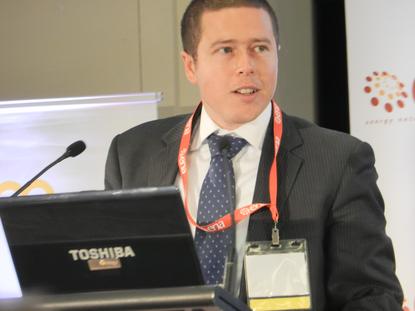Ausgrid explores customer incentives in smartgrid push
- 18 May, 2011 17:49
New South Wales energy utility Ausgrid is exploring customer rebates and reduced tariffs based on the differing energy saving technologies deployed at 50,000 homes slated for the Federal Government’s $100 million Smart Grid, Smart City project.
The utility, known as EnergyAustralia before being sold off by the New South Wales Government earlier this year, has looked to separate the 50,000 sites into subsets of 30,000 and 20,000 homes with a view to experiment with network-only and retail-based bundling, respectively. Depending on which subset the home belonged to, they would potentially be offered a bundled tariff or rebate based upon dynamic and seasonal time-of-use, interruptible load and air conditioner cycling.
Ausgrid is working with the retail partners to bundle the full set of reduced tariffs with other services at all 50,000 homes, but some would not be included in the 30,000 homes included in the network-only trial.
Project manager, Adrian Clark, said the tariffs being explored were indicative and may not be instituted once the systems are made operational by 2013. However, the complexity of the systems involved in monitoring and charging customers based on the technologies used within the home, and subsequently off-loaded onto the network, might force Ausgrid onto a “plan B” offering a more restricted set of services.
“The one principle that the retailers and ourselves are subscribing to is we’re not going to put products that are set to fail, it’s really about doing that pre-analysis and also going back to industry and the Australian Government with a subset,” he said.
Ausgrid managing director, George Maltabarow, said the slow transition to smart grids provided the step-change needed for the energy industry to rethink business models, in line with the transformation faced by telcos 20 years go. That rethink required customer incentives that would encourage those eligible to transition and proactively reduce their own energy usage through technologies involved in what utilities have come to refer to as a ‘home area network’.
“If we can’t tell customers what the benefits are going to be, then I suspect that we won’t be able to succeed in deploying that sort of innovation,” he said.
“Are the customers going to believe that we’re building something to save money or are they going to believe that we’re building something to save ourselves costs and pocket all the profits?”
The homes slated for the smart grid are part of a wider set of 350,000 homes earmarked across NSW, including key areas in Newcastle and Sydney’s inner west, for the rollout of technologies expected to become an industry standard for a wider national rollout. Some areas would test specific technologies, such as micro-grid energy storage technology at homes in Scone.
A paid trial of 1000 select smart meters is scheduled to begin in early August, ahead of the wider 30,000 meter rollout beginning in October. The utility has already begun rolling out LTE-capable base stations to form its smart grid transmissions network.
Technology companies including Cisco, IBM, Ericsson and Redflow are all slated for inclusion in the trials.
Follow James Hutchinson on Twitter: @j_hutch
Follow Computerworld Australia on Twitter: @ComputerworldAU

